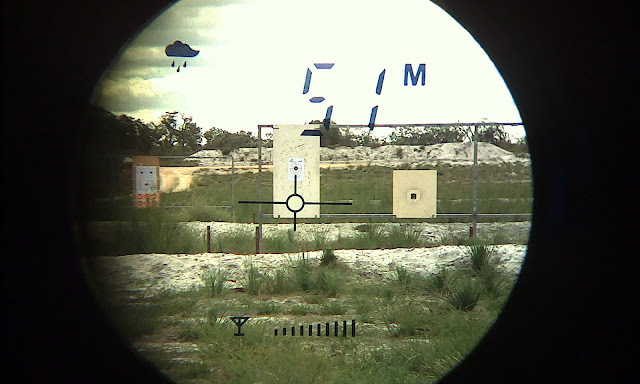Disclaimer.
I am not sponsored or paid by any supplier or manufacturer to provide product reviews. All views and opinions expressed are my own. If i name a business, supplier or person I do so of my own free will and receive no incentive or enticement to so. If in the future any of these circumstances change I will disclose such changes as they occur.
Vision King Rangefinder
I was recently shopping for projectiles and was talking to the manager of the Shooters Shed about rangefinders, he suggested I try a Visionking as that was what he used and was quite certain it would fit my requirements. So I decided to purchase one and give it a try, priced just under $300 it was reasonable value and I was keen to see if it performed as advertised. As a comparison I priced some of the more well known brands and found them to be a little more expensive but offering similar performance. I also priced it on a number of web sites and found it to be reasonably priced once exchange rates and postage was taken into account.
 |
| The Visionking Rangefinder in the box. |
Inside the box I found the rangefinder instructions, they were easy enough to read and understand even though they were an English translation and some of the grammar was rather amusing. The Rangefinder itself came inside a nice little pouch that can be worn on a belt if required, I found mine easier to carry in my chest pocket. The battery compartment can be opened with a small coin or screwdriver and holds one CR-2 Battery.
 |
| The Visionking in the Box. |
The Visionking was advertised as being capable of accurate range finding up to 600 meters so I was expecting actual field performance on animals of half that distance. My initial testing took place on the range under cloudy conditions and I found the Visionking Rangefinder accurate at all ranges tested out to 500 meters. It was quite hard to hold the rangefinder steady enough to get an accurate reading at distances over 300 meters, and I used my shooting sticks to steady the range finder in much the same way as I do with my binoculars.
 |
| Steadying the range finder with the shooting sticks. |
The Visionking is easily operated having only 2 buttons, the forward most button is the power and ranging button, the rear button flicks through the 3 modes, being spot ranging, cloudy condition ranging and proximity ranging. The proximity ranging function gives away its parentage as being from the golfing rangefinder family. I found the cloudy condition ranging worked well out to 400 meters then became a little hard to get accurate ranges. Switching to the spot ranging mode I was able to get accurate measurements out to 550 meters, the reflective properties of the object being ranged have a large influence on accurate performance.
 |
| The view through the Visionking with the power off. |
 |
| Cloudy mode , as represented by the rain cloud, return signal strength is displayed below. |
 |
| Cloudy mode test at 400 meters. |
To field test the range finder I took it out to a friends property in the Perth hills and ranged various objects and animals. I was able to get accurate measurements on large hard surfaced objects like rock faces and sheds out to 585 meters, close to the advertised performance. If I was able to hold the Range finder steadier I may well have achieved the advertised performance. I was able to get accurate range measurements on large animals (cows) out to 385 meters, again being able to hold steadier may have increased the range finding capability but I doubt you could range a goat sized animal past 250 meters.
In all I found the Visionking Range Finder's capabilities acceptable for general walk and stalk hunting where the average shot would be far less than 300 meters, it would also be perfect and most suited for bow hunting. So in conclusion if you are looking for an entry level range finder the Visionking will fit the bill, I am certainly happy enough to use it for my local walk and stalk hunting.
For Chamois and Thar hunting in the New Zealand alps I would obviously require something a bit more rugged and capable but this is after all a reasonably priced budget Range Finder.
I have not yet tested its ability to withstand abuse, that will happen later in the year on a Sambar Hunt.
Thank you so much for this great explained here that you shared, great
ReplyDelete